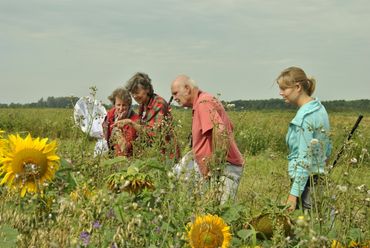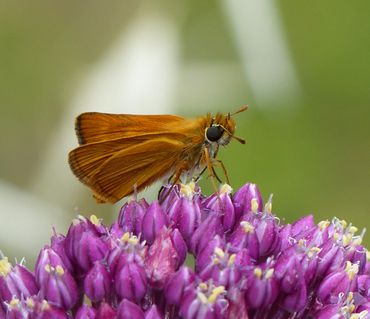Making your observations count
Making your observations count
In order to conserve butterflies effectively we need to have good information on species distributions and trends in abundance. However, outside parts of western and northwestern Europe, such data is sparse. You can help us gather better data from across Europe in the following ways:

Conduct a butterfly transect. This provides high quality data on densities and trends (as well as distribution). The method is simple: make a transect of approximately 1 kilometre and try to count the butterflies each week in the flight season with good weather conditions. It does not matter if you miss a week or two, we can still make an estimate of the numbers. A detailed manual on how to set up and monitor a transect is available at this link. If you live in a country with an existing Butterfly Monitoring Scheme (BMS) then the webpage of eBMS will give you an overview who to contact. If you live in one of the other European countries without a BMS, you can make your own transect directly on the eBMS website. The project Assessing ButterfLies in Europe (ABLE) aims at filling the gaps for transect counts in Europe.
Conduct a 15 minute count. With the ButterflyCount smartphone app you can count butterflies for 15 minutes (and pause at any point to make a photo or identification). You can walk around, move along a path or stay in a field, as long as you enter all the butterflies (including the very common ones) using the app. The app has made it very simple to do so, it records the route with your phone GPS or you can draw yourself the area recorded. You can do one or more 15 minute counts anywhere in Europe as long as the weather is good enough for butterflies to be active. Such 15 minute counts are especially ideal for either remote locations (e.g. rare species on high mountain tops or other remote places) or when you are on holiday. You can do it everywhere: in the garden of your hotel, on the camping site, on a great butterfly spot, or simply along a field beside the road. All counts are welcome.

Make casual records of butterflies you see and add them onto a database where they can be used for research and conservation. You can also enter any 'old' data as well. You can either enter data onto an existing national website (if one exists) or use one of the international websites observation.org or iNaturalist.org in the butterfly projects which accept records from anywhere in the world. All such data becomes available to researchers as well as BCE partners. Both these international systems have a smartphone app which you can use in the field, and you can also upload ‘old’ records from an excel file or enter your old observations via a web portal. Once verified, all data is gathered at the Global Biodiversity Information Facility (GBIF.org). If you are worried about privacy or sensitive records, there are settings to control this. You can hide your observations from all other recorders or make them open. However, observations of rare of threatened species are almost always hidden and can only be viewed by administrators.
Any records you submit will improve our knowledge and help protect the butterflies we love. Butterflies are also useful indicators of changes in other less well known insects groups. Such knowledge thus helps us to understand changes in our environment and conserve wildlife as a whole.
Chris van Swaay
Martin Warren
Cristina Sevilleja
Sam Ellis
